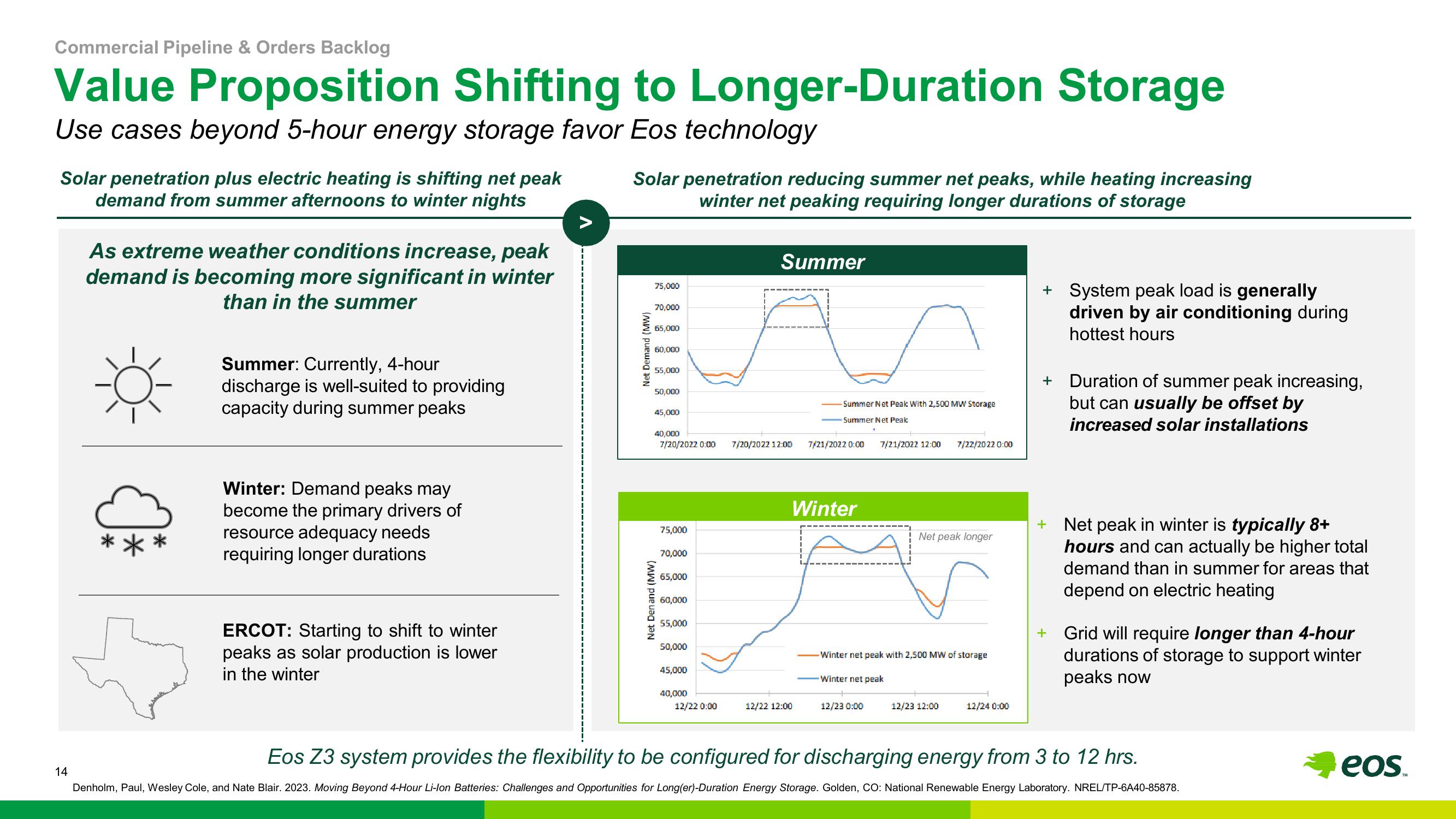Eos Energy Results Presentation Deck
Commercial Pipeline & Orders Backlog
Value Proposition Shifting to Longer-Duration Storage
Use cases beyond 5-hour energy storage favor Eos technology
Solar penetration plus electric heating is shifting net peak
demand from summer afternoons to winter nights
14
As extreme weather conditions increase, peak
demand is becoming more significant in winter
than in the summer
Summer: Currently, 4-hour
discharge is well-suited to providing
capacity during summer peaks
Winter: Demand peaks may
become the primary drivers of
resource adequacy needs
requiring longer durations
ERCOT: Starting to shift to winter
peaks as solar production is lower
in the winter
Solar penetration reducing summer net peaks, while heating increasing
winter net peaking requiring longer durations of storage
Net Demand (MW)
75,000
70,000
65,000
60,000
55,000
50,000
45,000
40,000
7/20/2022 0:00
Net Den and (MW)
75,000
70,000
65,000
60,000
55,000
50,000
45,000
40,000
12/22 0:00
Summer
7/20/2022 12:00
Summer Net Peak With 2,500 MW Storage
- Summer Net Peak
12/22 12:00
7/21/2022 0:00
Winter
7/21/2022 12:00 7/22/2022 0:00
12/23 0:00
Net peak longer
-Winter net peak with 2,500 MW of storage
Winter net peak
12/23 12:00
12/24 0:00
+ System peak load is generally
driven by air conditioning during
hottest hours
+ Duration of summer peak increasing,
but can usually be offset by
increased solar installations
+ Net peak in winter is typically 8+
hours and can actually be higher total
demand than in summer for areas that
depend on electric heating
Grid will require longer than 4-hour
durations of storage to support winter
peaks now
Eos Z3 system provides the flexibility to be configured for discharging energy from 3 to 12 hrs.
Denholm, Paul, Wesley Cole, and Nate Blair. 2023. Moving Beyond 4-Hour Li-Ion Batteries: Challenges and Opportunities for Long(er)-Duration Energy Storage. Golden, CO: National Renewable Energy Laboratory. NREL/TP-6A40-85878.
eosView entire presentation